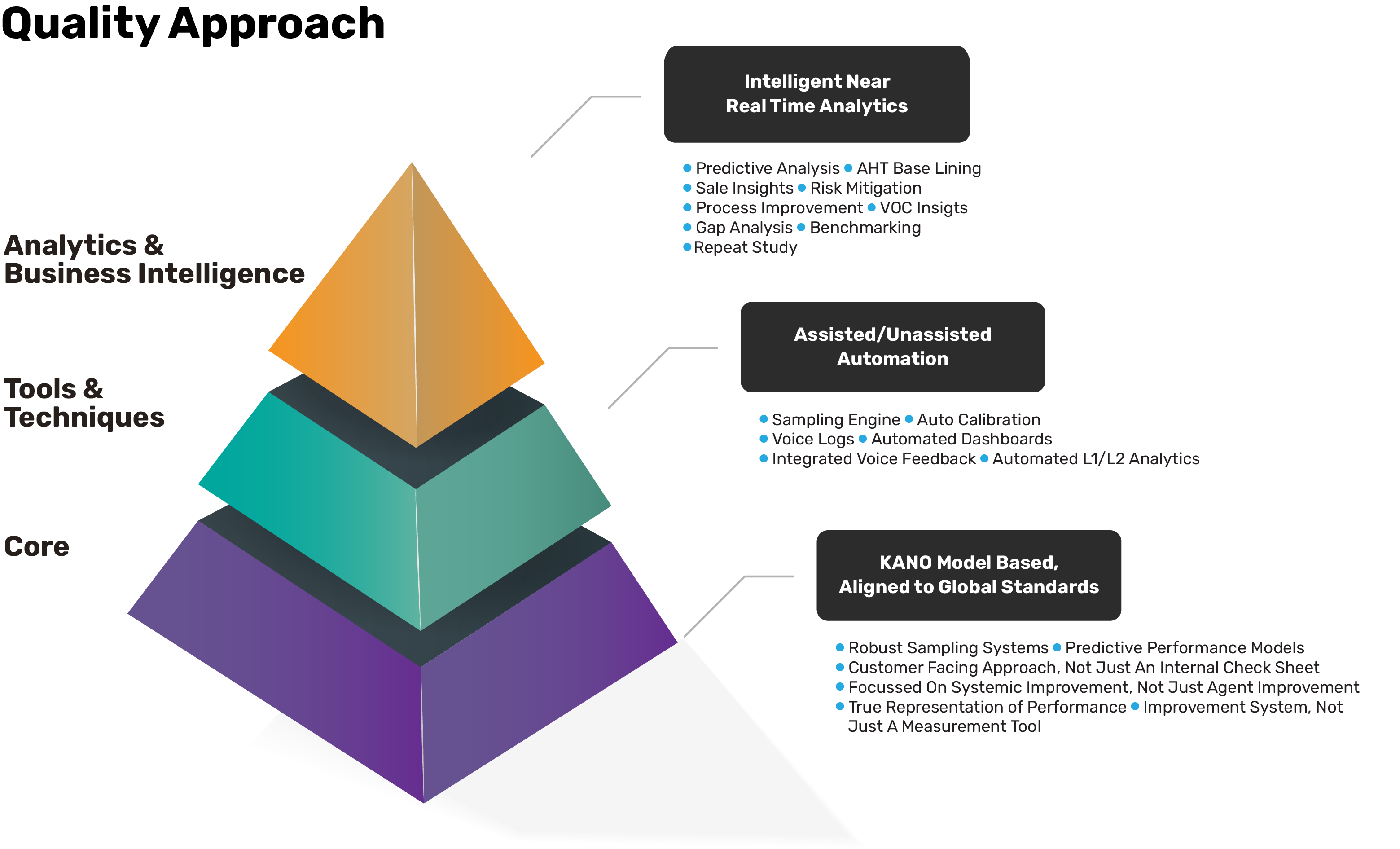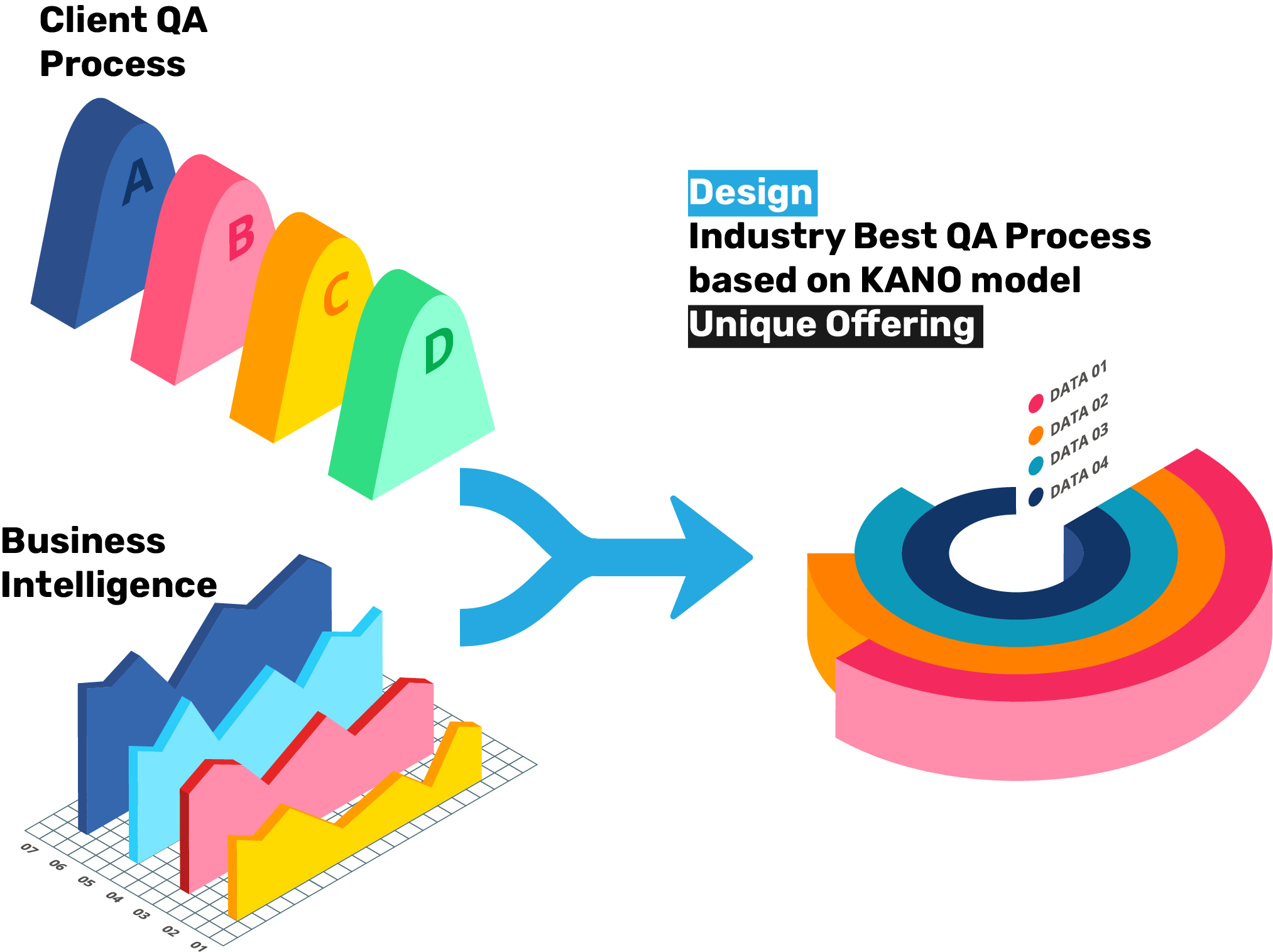Process

Gain high levels of efficiencies and accuracies with our Curated Quality models focused on Defect Prevention, not just Defect Reduction.
Quality is not a department but a Way-Of-Life; Everyone owns Quality.
7 limitations of Quality
- Quality input systems often measure wrong matrices and hence fail to drive output matrices
- They more than often miss capturing the key drivers of customer experience
- Quality processes are very loosely executed leading to an ineffective Quality Management System (QMS)
- Quality assessment systems are not used as effective listening posts despite being exposed to thousands of customer interactions
- The focus on only fixing individuals and not systems
- The data and information thrown out from the QMS lack intelligence and hence have poor actionability
- Finally, the lack of robust tools and automation further inhibit the effectiveness of the QMS

Our Approach
The design of our QA System – IngeniQ – is based on one of the industry best standards of Customer Engagement. Our system assures that Input Systems are built on detailed and logical analytics of Output Systems such as customer experience, productivity, key business focus areas and more.
QA Process, although meant to define the quality of service and should help customer experience and business, inevitability ends up becoming a compliance tracker often with no relation to Customer experience and Business outcomes.
IngeniQ is designed after quantitative and logical analysis of output models (like customer experience measurements, productivity measurements, key business focus areas). The output-input relations are derived by models like the KANO model, basis their statistical relevance.
With us, systemic opportunities are constantly identified and statistically quantified as a continuous 360-degree process, drawn through the curated interaction analysis and L2/3 drill down of one KPI’s relation with another, enabling informed and effective decision making.


Here are some aspects of our Tools and Automation:
- Our Assisted automation process ensures the QMS is custom designed for the vertical, process and specific pain areas.
- The tools are designed not to measure the extent of the problem, but to measure the effectiveness of the solution to the problem.
- The tool is enabled by a statistical designs model which enables precision and accuracy levels while troubleshooting a problem.
- Traditionally tool and bandwidth limitations drive the team to sustain performance only by eliminating or avoiding defects. Our systems are further enhanced to learn, hone and standardize great experiences and best practices.
